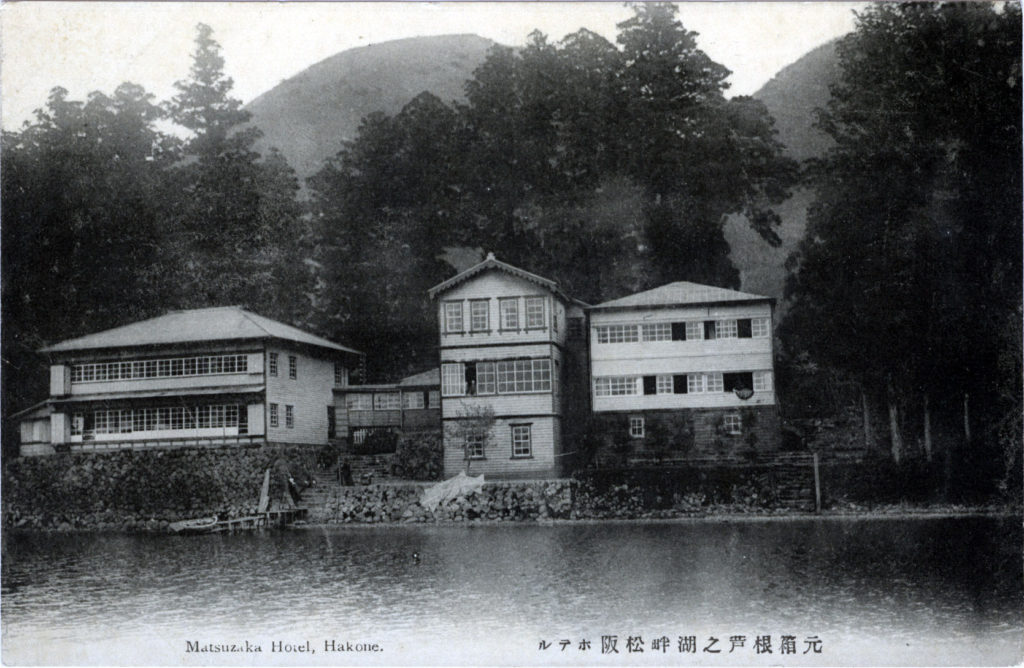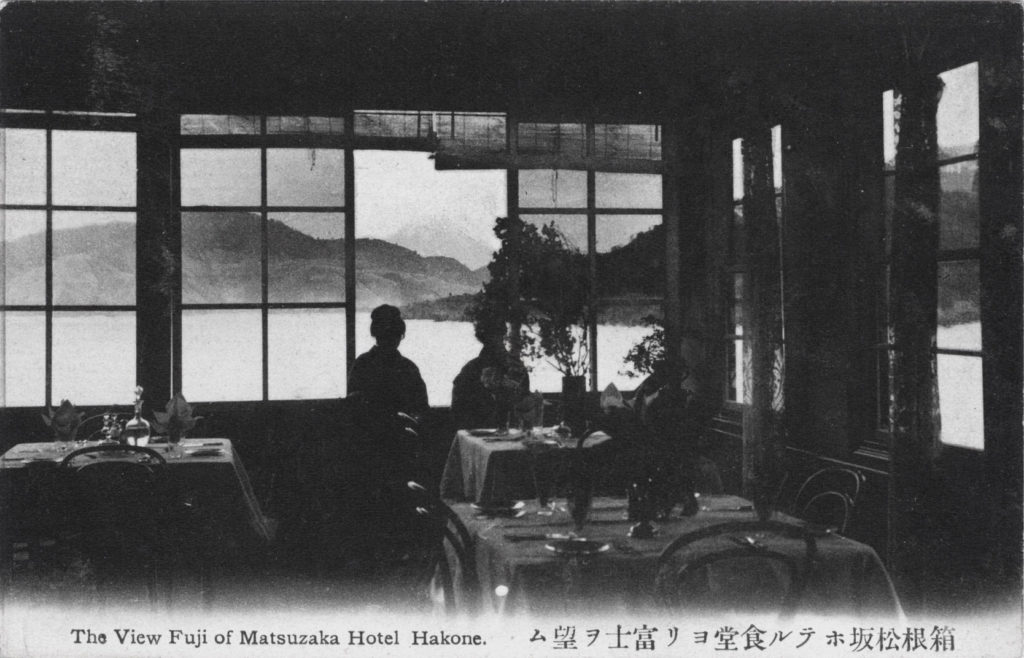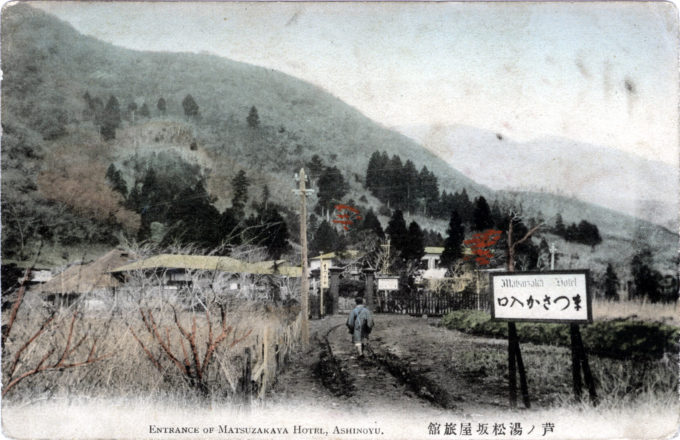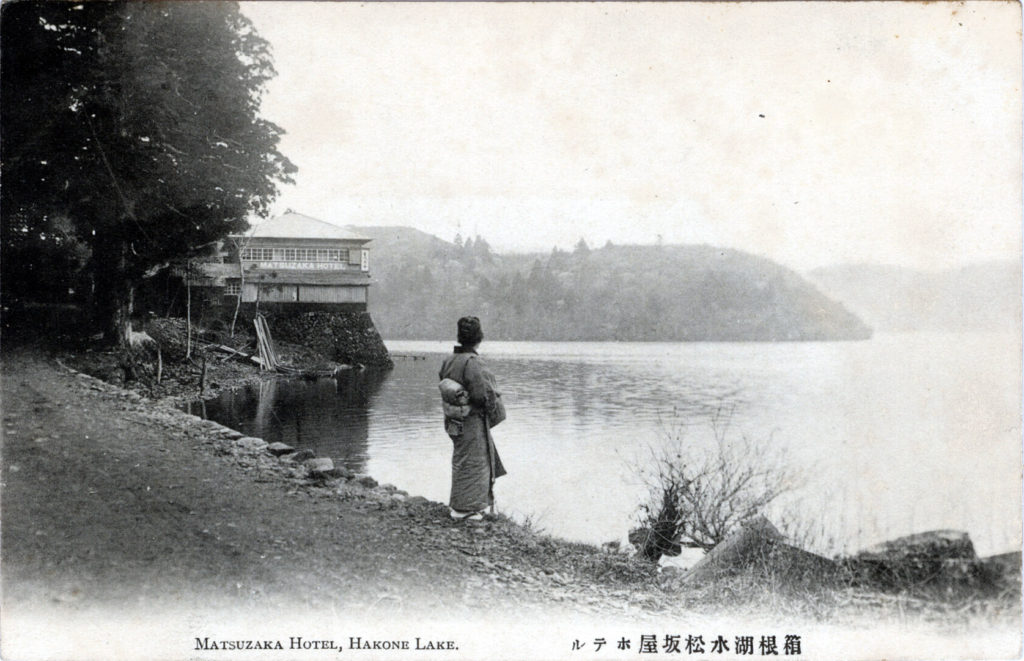See also:
Lake Hakone, c. 1920
Hakone Hotel, Hakone, c. 1910-1950
“Gakueirou Matsuzakaya in Hakone, Lakeside Ashi [Lake Hakone], was first established in the middle of Meiji period by Yoshinosuke Ando, who was born the second son of Manemon Matsuzaka who was the owner of Matsuzakaya-honten in Hakone, Ashinoyu.
“We started as a western style ‘Hotel Matsuzaka‘. Foreign register book handed down to us shows that we have welcomed a lot of non-Japanese guests from Germany, Russia, England and so on. After struck by the Great Kanto Earthquake in 1923, we rebuilt in new location as a Japanese style hotel, Gakueirou Matsuzakaya ryokan, and have been in business until now.”
– Our History, Hotel Matsuzakaya
“Tourists in the Hakone district know well the strait and narrow way which leads from Miyanoshita to Hakone. It is called, by a bold stretch of imagination, a road but a road in the ordinary and civilised sense it certainly is not.
“In fine weather it is a mixture of huge stones and loose sand; in wet weather it is an alternation of slippery rocks and treacherous quagmire. Jinrikisha are out of the question; and when it is not rainy most sensible people prefer to walk. When it is wet, the only means of locomotion is a kago and a kago to a European of ordinary length of leg is one of the most uncomfortable conveyances conceivable.
“In order to obviate this inconvenience, the proprietors of the Mikawaya Hotel [at] Kowa-kidani, the Matsuzakaya Hotel [at] Ashinoyu, and other establishments contemplate the construction of a proper road which will permit of jinrikisha traffic. The route has been surveyed by the Kanagawa authorities, and the promoters are appealing for subscriptions to Japanese and foreign visitors.
“The names of subscribers will be inscribed on boards to be put up at the entrances of the hotels … Provided nothing is done to mar the picturesqueness of the scenery between Miyanoshita and the heights above, the scheme appears worthy of encouragement.”
– The Japan Weekly Mail, May 20, 1899
“Ashinoyu is famous for its sulphur springs, whose efficacy in the treatment of skin and rheumatism attracts crowds of Japanese patients and not a few foreigners despite the bleak, uninviting appearance of the locality. Ashinoyu is very cool in summer, owing to its height, but for this advantage by being frequently enveloped in mist. The road thither, about half of which is a stiff pull, leads close by Kojigoku.
“Just before reaching Ashinoyu, towards the end of a steep called the Nana-mawari, or ‘seven turnings’, the guide should be told to lead over a small eminence known as Benten-yama. It is at all out of the way and offers a splendid view – Odawara Bay, peninsula of Miura with Enoshima like a little knob on the coast; and beyond that, Tokyo Bay and the blue outline of the provinces Kazusa and Boshu, which divide Tokyo Bay from the Pacific.”
– A Handbook for Travellers in Japan, by Basil Hall Chamberlain & W. B. Mason, 1891





